The Comprehensive Guide to Building a B2B Content Marketing Strategy

Here’s a little exercise. When we say “B2B content,” what’s your first reaction?
We can take a guess, and we’re assuming it goes something like this:
B2B content? Yawn..
Right? B2B content isn’t really known for being as sexy as its distant cousin, B2C content. But we’re here to tell you — B2B content is getting a glow-up, and it’s anything but boring.
Let’s dive in and see how you can take the new-and-improved, glammed-up version of B2B content and build a marketing strategy that drives growth for your brand.
We’ll take a look at these topics:
- What Is B2B Content Marketing?
- B2B Content Marketing vs. B2C Content Marketing
- 20 Tactics to Create a Repeatable B2B Content Marketing Strategy
- Need Help Creating a B2B Content Marketing Strategy?
Jump ahead!
What Is B2B Content Marketing?
Content marketing is one of the fundamental building blocks of inbound marketing (and is critical to paid marketing as well). Content comprises pretty much any asset you create for your brand and its audience — whether it’s a blog, a downloadable guide, an infographic, a podcast, or even user-generated content …and the list goes on.
On a broad level, B2B and B2C content are the same in that they provide useful, relevant, and valuable information to the intended audience (more on how they’re different in just a bit). But with B2B marketing, the goals — and the tactics used to achieve them — are very nuanced and specific.
Most B2B brands in every industry from fintech to SaaS have some sort of content marketing strategy, and while they vary widely, most are working toward the same endgame.
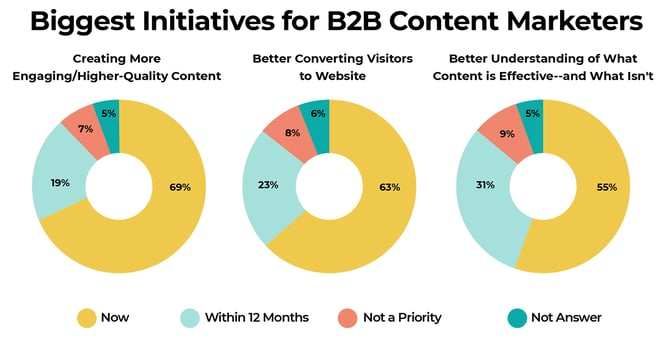
Content marketing helps you meet your B2B audience where they are, whether they’re just entering the awareness stage, have moved into consideration, or have arrived at the decision stage. Content plays a large role in getting them into your funnel, and it’s even more critical in moving them through it and nudging them toward conversion.
But to reach your goals and give your audience what they need to pull the trigger and become customers, you need to have an airtight strategy in place. For B2B, it takes a lot more than just creating some slick ads and a few social media posts.
It’ll take some in-depth research, a lot of time, and a willingness to test and experiment until you find what works. And you’ve got to be cool with trusting the process. We know it’s a lot, and that’s why we’re here to help.
Further down, you’ll read our 20 best tips on building a B2B content marketing strategy, but before we get there, let’s find out how B2B content is different from B2C.
B2B Content Marketing vs. B2C Content Marketing
How different can they actually be, you ask? Pretty freaking different.
By now, you probably know that B2B and B2C share some things in common, but you’ve also realized how vastly different the processes, tactics, and goals can be.
Since B2C goes directly to the source, those brands tend to have a much shorter sales cycle. The processes happen faster, so the tactics used must be quick to implement. And B2C audiences aren’t looking just for products in their industry, so brands often cast a much wider net.
With B2B audiences, they need more time to make a decision and more information to do it. But they’re also more relationship-driven because they’ve had the time to evaluate brands and decide which best aligns with their needs and values. Check out content statistics if you want to learn about that.
While it’s impossible to say “B2B is always…” or “B2C is always…” we can certainly find some typical ways the two usually differ.
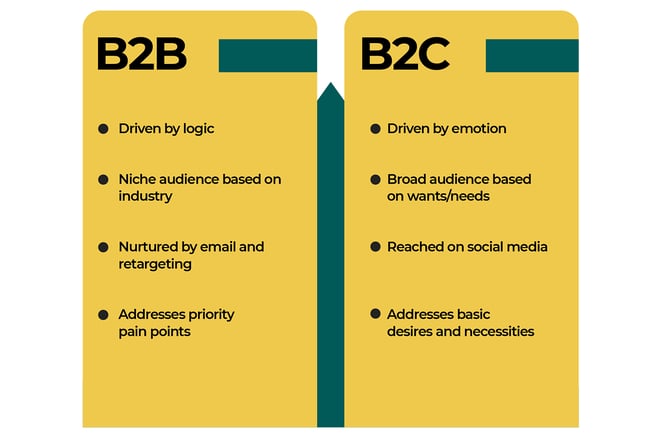
You’ll want to keep these differences in mind when creating your B2B content marketing strategy, but don’t get too bound to them. For example, understanding that B2B audiences value logic over emotion doesn’t mean you can’t appeal to their feelings. And some B2B audiences might be more engaged and motivated on social, even though that’s the “B2C spot.”
Bottom line: Stay flexible because your B2B buyers are, in the end, people. You just have to do your homework to understand what they need and how you can use content to assure them that your B2B brand can deliver.

20 Tactics to Create a Repeatable B2B Content Marketing Strategy
Ready to jump in and start creating your B2B content plan? We’ve got you covered. Here’s our top 20 list so you can get rolling right away.
#1: Develop Buyer Personas to Identify Your Audience
Your buyer persona isn’t the same as your target audience. A target audience is a little more general and usually based on demographics. For instance, you might know you’re targeting primarily C-suite level positions and six-figure incomes in the fintech industry. That will help you narrow the field, but it doesn’t drill down to your most motivated buyer.
Your buyer persona, on the other hand, is an in-depth look at your ideal buyer and includes psychographics and behavioral attributes. So, your C-level Fintech exec may also be primarily men who give to charitable organizations, spend their disposable income on professional sporting events, are likely to own a boat, and have grown children.
This in-depth understanding will help you create content that speaks directly to this buyer and supplies the information he needs to make a purchase decision.
But how do you craft a persona specifically for a B2B buyer?
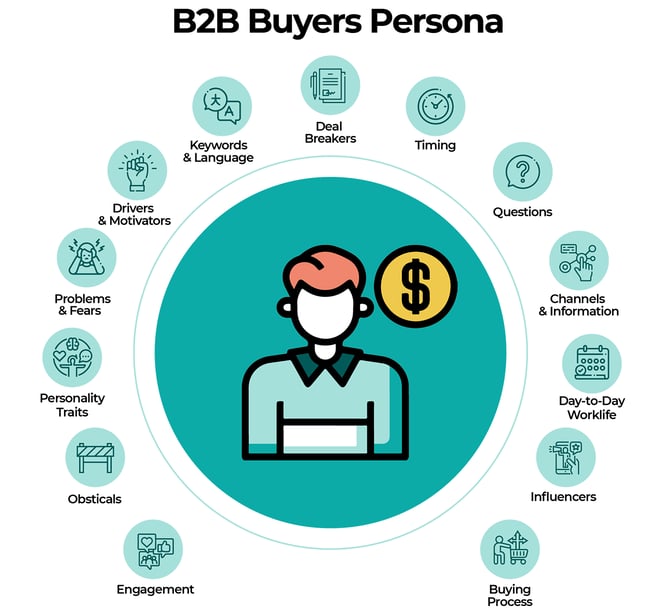
Remember that the more information you can gather, the better off you’ll be. And if you need some help, you can download the FPS buyer persona template. It’s free, it’s easy to use, and it works!
#2: Conduct a Content Audit
It’s difficult to understand where you want to go with your content if you don’t understand where you are right now. Putting together a content audit framework now will allow you to track and manage the content you have and the content you plan to create so you can quickly check the status whenever you need.
To begin, create an inventory of all your existing content, then organize it with tags so you can filter down to what you’re looking for. You’ll probably want to tag content by:
- Date: Is it evergreen content, or is it tied to a specific time/occasion?
- Funnel: Is the topic TOFU, MOFU, or BOFU, and where should it occur in the buyer’s journey?
- Assets: Does the content include infographics, videos, etc.?
- SEO: Is the content optimized, and does it have keywords outlined, meta descriptions, alt text, and title tags?
For a little extra mojo, you can combine your SEO and content audits into one so you’re keeping tabs from both ends.
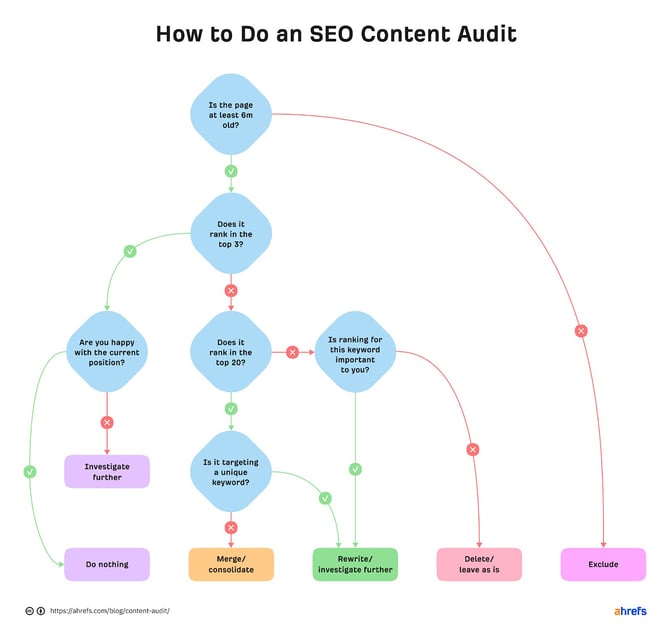
Your SEO/content audit will enable you to check your content’s performance, but it will also give you a map for managing your content into the future.
If you want to find ways to identify gaps in your content strategy, it helps to use a content marketing matrix, or to plot your content on a visual content marketing funnel.
#3: Use Micro-Targeting to Narrow Your Focus
Having your B2B buyer persona is a great start in getting your content in front of the right audience, but it’s possible to drill down even further through micro-targeting.
Micro-targeting ensures you’re meeting your persona where they are, with the message they need/want to see.
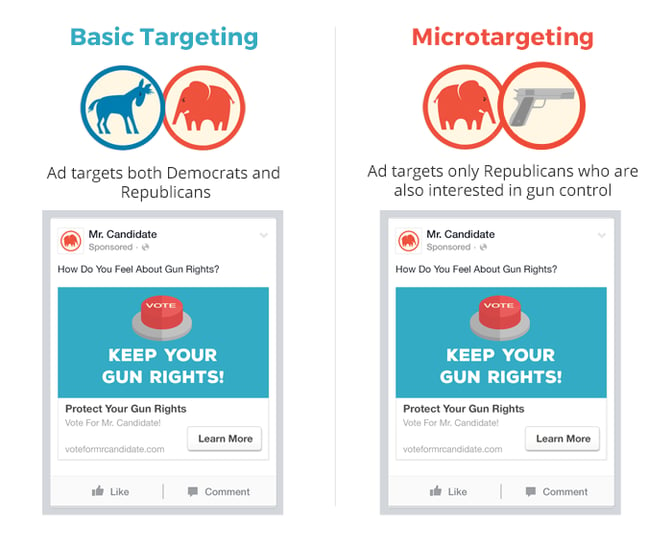
To really take advantage of micro-targeting, you’ll want to dive into the long-tail keywords your audience is searching. Long-tail keywords are very specific phrases that indicate high search intent (so the searcher is usually further in the funnel and closer to conversion). If your content can fulfill that search intent, you’re golden.
Use an SEO tool to find likely keywords for your audience, and start narrowing from there until you’ve found your micro-target.
#4: Understand the sales funnel
You likely already know the different stages of your sales funnel, which typically looks something like this:
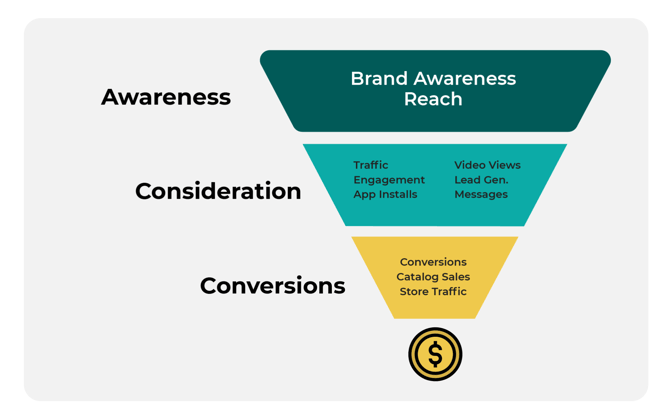
But you also need to understand how to create content that aligns with each stage of the funnel and speaks to the appropriate audience. For example, you don’t want to push out an in-depth how-to guide to someone just entering the awareness stage — they’ll be overwhelmed and confused because they’re still at the top of the funnel.
When it comes down to it, you’ll need to decide which mix of funnel-specific content works for your brand and your goals.
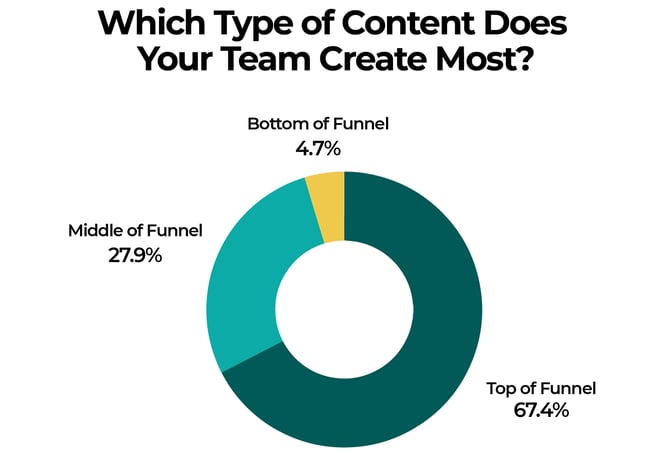
As you can see, most B2B marketers focus their energy on top of the funnel (TOFU) content. But that leaves a lot of room for audiences in the middle, especially at the bottom of the funnel, which could be when they need that extra shove from your content to push them toward conversion.
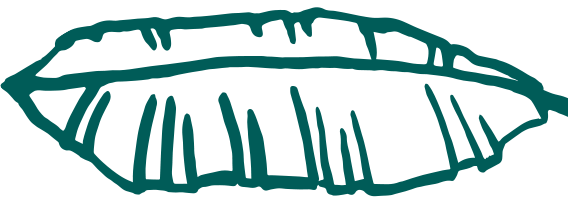
#5: Create a Content Style Guide
Content marketing can be overwhelming. That’s because everything is content, and there are endless ways you can create, repurpose, and distribute it to your audience. The strategy you’re building now will be your roadmap, but you’ll also want to have a style guide.
A content style guide is your point of reference for creating consistent, effective, and on-brand content. A great style guide will contain all the grammar and formatting to keep your content high-quality, but it will also have helpful info on your brand voice and tone.
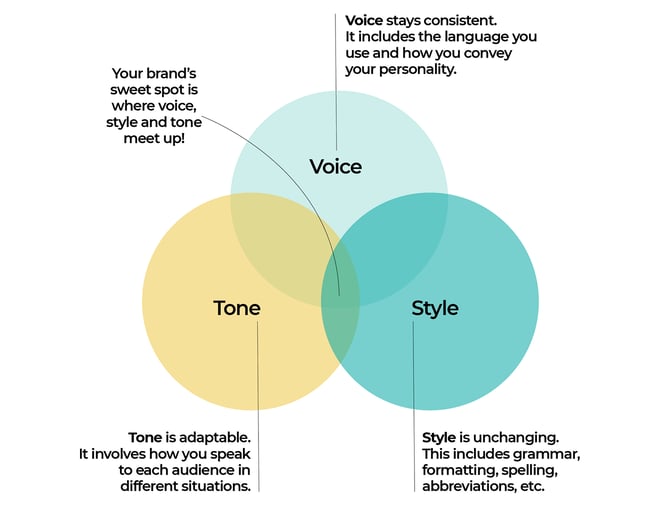
Your style guide can be a living document in that you can update it as your brand and content needs evolve. You may also want to include information on branding, like logo usage, color pallets, etc. That way, if you need to bring in extra help for content creation, you’re giving them a head start.
#6: Set Goals for B2B Content Marketing
Content marketing is extremely popular because it can cover a wide range of marketing goals. It contributes to everything from raising brand awareness to increasing conversions.
Overall, content is the top way of getting your B2B brand’s name out to your audience.
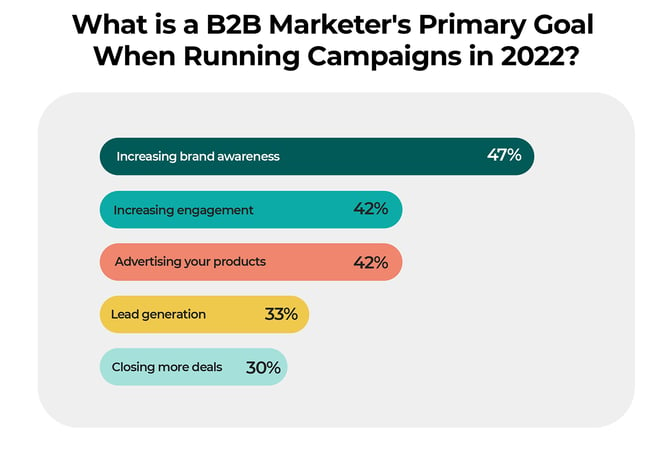
Let's say you're a B2B startup. Brand awareness is probably at the top of your to-do list, and content marketing will help you achieve that goal. However, just because brand awareness is the most common goal, don’t think it’s the only one that matters. Your goals for your brand (whether it’s traffic, revenue, etc.) will guide your content goals and will shape your strategy and the tactics you use to get there.
#7: Find Blog Topic Ideas
When it comes to content, we always encourage marketers to “think outside the blog.” Blogs are pretty standard fare in content marketing, and they can feel tired after a while. However, blogs are most brands’ first and top choice when it comes to content — and for good reason.
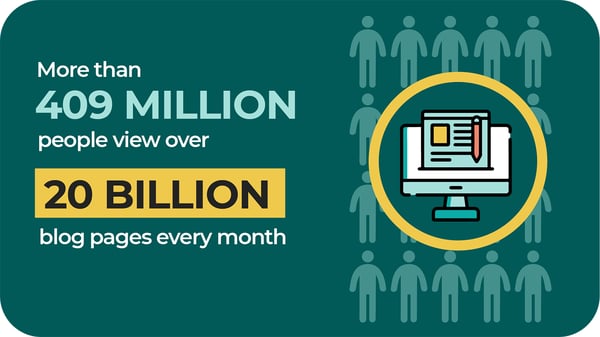
People want content…and that includes your audience. A high-quality blog that’s regularly updated is one of the best ways to deliver it.
But for some marketers, the sticking point is coming up with ideas for fresh, relevant blog content on an ongoing basis. You’ll need to commit some time to brainstorm and ensure you’re exploring ideas for all stages of the sales funnel.
And when you need a little extra help, check out some idea generators online, like this one from HubSpot.
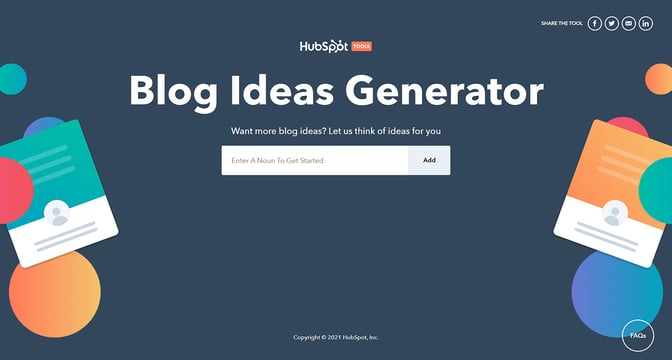
All you have to do is enter a handful of words you’d like your content to include, and the generator will serve up at least a week’s worth of blog titles.
We suggest using your primary keywords in the search and seeing what the generator comes up with. They won’t all be winners, but it’s a quick and effective way to spark creativity when needed.
Here are some other ways to rev your creative engine and start cranking out effective and interesting blog ideas:
Competitor Research
This is probably one of the best ways to get blog ideas — check out what the competition is writing about. The trick here is making sure that whatever content you create is more in-depth, higher quality, and delivers more to the audience than the competitor you’re trying to beat.
Keyword Research
Use your SEO tool to explore keywords related to those you’re already ranking for or those you want to rank for. Look into long-tail keywords and dive into search intent. Make sure all the blogs you’re creating are optimized for search.
Leadership Content
B2B audiences really love thought leader content. They want information and data, but they want it from a reliable and trusted source. Take a look at what’s trending in thought leadership across your industry — check LinkedIn, and follow influencers and leaders in your market space.
Data from Audience Survey
Go straight to the source to find out what content they want to see on your blog. Poll your existing audience of readers and customers, and see what they like — and don’t like — about your blog. Compile your findings and use that as a starting point to guide your editorial calendar.

#8: Determine Your Messaging
Once you’ve got ideas for topics and know what you want to say, you’ll need to figure out how you want to say it. That’s where messaging comes into play.
Messaging will be influenced by your content style guide, and it should align with your buyer persona and where you want to hit them on the buyer’s journey. It’s important that you understand the types of messaging your buyers will respond to — and the types that are a big turnoff.
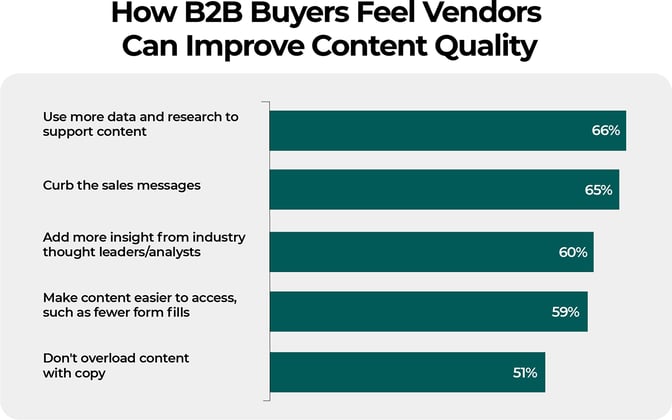
For B2B audiences, you’ll want to incorporate a lot of data and info into your messages and limit the over-the-top sales pitches. Also, remember that lots of information doesn’t necessarily mean lots of copy — keep the text short and sweet so your true message shines.
#9: Publish Original Research
Just like thought leadership, B2B audiences are crazy about original research. They can’t get enough of the data, and they won’t forget if your brand is the one to give it to them. In fact, while they can be time-consuming, conducting research studies is a highly effective way to generate great content.
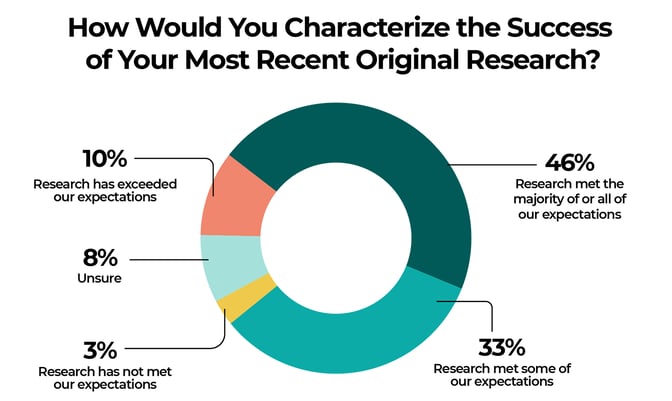
And there’s an added bonus. Publishing your first-party research will also help you build your backlink portfolio and give your industry authority a big boost.
#10: Create Content That Solves Problems
Raring to go on your content marketing strategy? Slow your roll, because you can’t just start cranking out content for the sake of having more content. Yes, you’ll want to build a backlog of great content assets you can reuse and repurpose across channels. But the key here is that the content must be relevant and appropriate for the audience you want it to reach.
Ultimately, every piece of content you create must fulfill one purpose — solve the reader’s problem.
To do that, you’ve got to understand their biggest pain point.
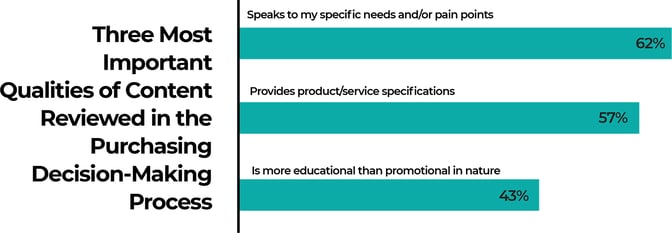
B2B buyers love data and details, but what they really need is a solution. When coming up with blog topics or brainstorming new content pieces, “What does this solve?” should always be your first question.
#11: Use Gated Content as an Email Magnet
Gated content includes assets that require information from your audience before they can access it. It’s a great way to move leads through your funnel, but surprisingly, a lot of B2B marketers tend to steer clear of it.
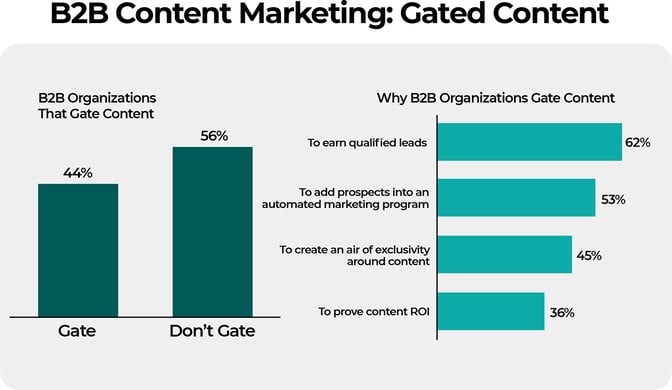
Gated content must be high quality and extremely valuable if you want your audience to give up their personal information for it. It can’t be something they can get anywhere else.
Once you develop a gated content asset, you can use that to build your email list and then go on to create an automated nurture campaign. Remember that your audience wants information, exclusivity, and quality, so be sure that’s what you always deliver.
Here are some ideas of gated content assets you can create to offer maximum value:
Templates
Templates are relatively simple to create, but they offer a lot of functionality to your audience. Just make sure the template you create is easy to use and offers something they can’t get easily anywhere else.
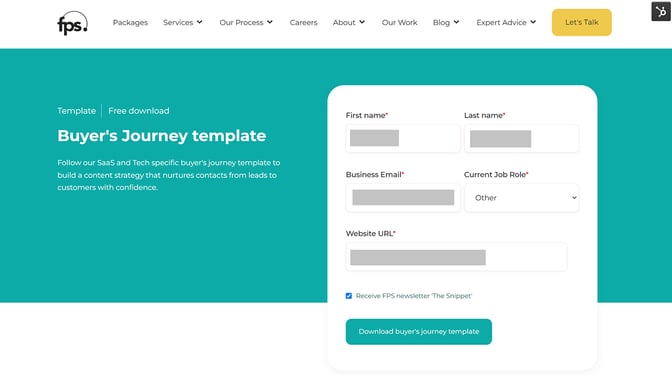
Calculators
Calculators are handy tools that B2B buyers love to download. You can develop an app or go a simpler route and build a calculator inside a spreadsheet. Just make sure your calculator functions correctly and works quickly and efficiently to save them time.
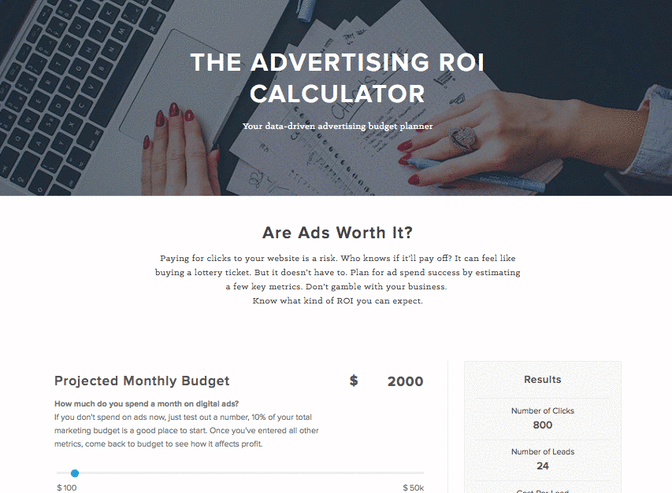
Downloadable Plans
Similar to templates, downloadable plans serve a clear and specific purpose and solve a problem that’s extremely relevant to your audience. It serves as a helpful aid to them while also keeping your brand top of mind.
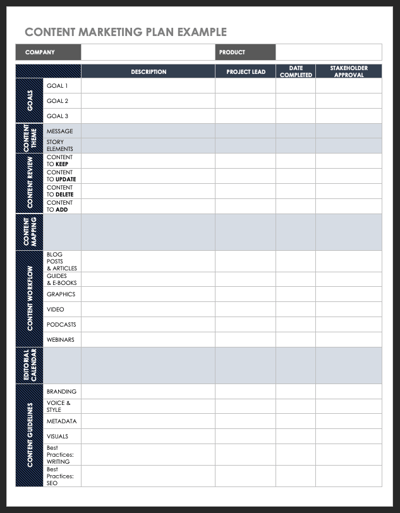
#12: Use an Editorial Calendar
Once you’ve brainstormed all these fabulous content ideas, what are you supposed to do with them? Don’t just jot them down on a notepad or toss them in a Google Doc — instead, create an editorial calendar so you can track and manage your planned content month by month.
You’ll find plenty of templates and tools for editorial calendars online, like this one from HubSpot.
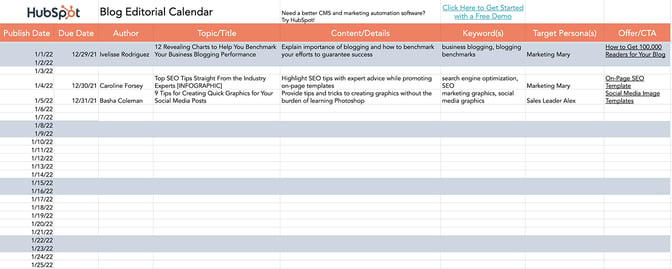
You’ll want your editorial calendar to include the following information:
- Topic and title
- Target keywords
- Buyer persona
- CTA
- Additional content assets (downloads, infographics, videos, etc.)
- Due date and publish date
You can add more information, like funnel position, internal links, author, and so on.

#13: Diversify Content Formats
Diversity is one of the most important elements of your B2B content marketing strategy. You can’t just write a great blog and call it good enough. You need to switch up your content formats to satisfy your different buyer personas at every sales funnel stage.
Wondering what’s most popular for B2B buyers?
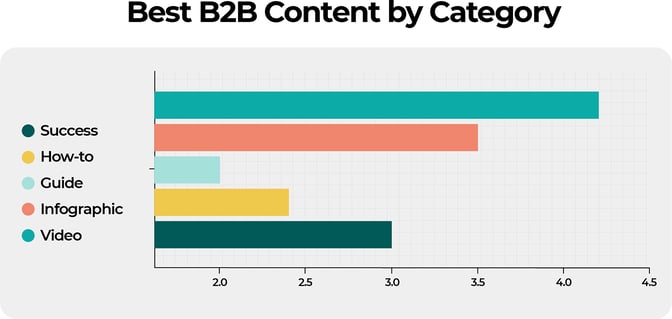
Here’s the great thing about content: one idea can be repurposed and pushed out in a variety of formats, across numerous channels. So once you nail down those amazing ideas, the possibilities are endless. Here are some of the top content formats you can explore:
White Papers and Ebooks
B2B audiences love these longer-format content pieces. And you don’t have to be a published author to write an ebook — it can be as simple as creating an in-depth document and offering it as a PDF download.
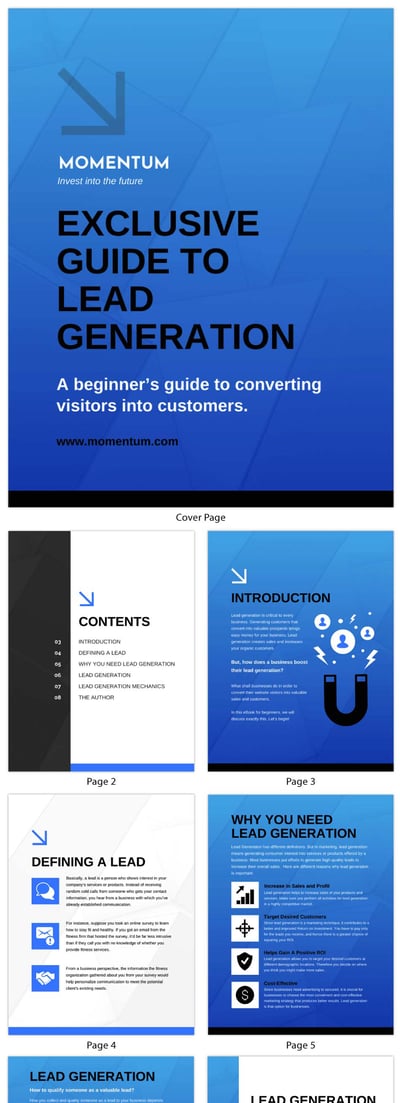
Videos
As noted above, video continues to be the top-performing content format, and we don’t see that changing anytime soon. Video content is much easier (and more cost-effective) to produce these days, so it isn’t difficult to ramp up your YouTube efforts or create your own video library.
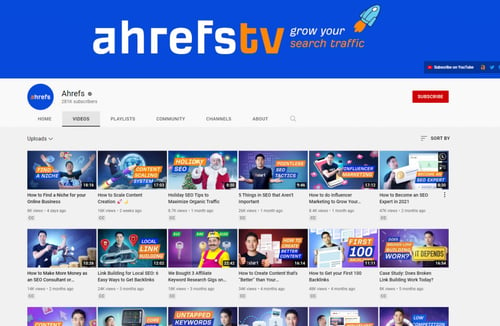
Webinars
Webinars continue to be a top pick among B2B buyers who love getting information and data first-hand. You can approach webinars in a couple ways. You can pre-record and offer it to a broad audience so they can watch on their own schedule, or you can create a live webinar and build a sense of urgency, exclusivity, and FOMO. We say — why not both? Hold the live event, then offer it as a download for anyone who signed up but couldn’t attend.
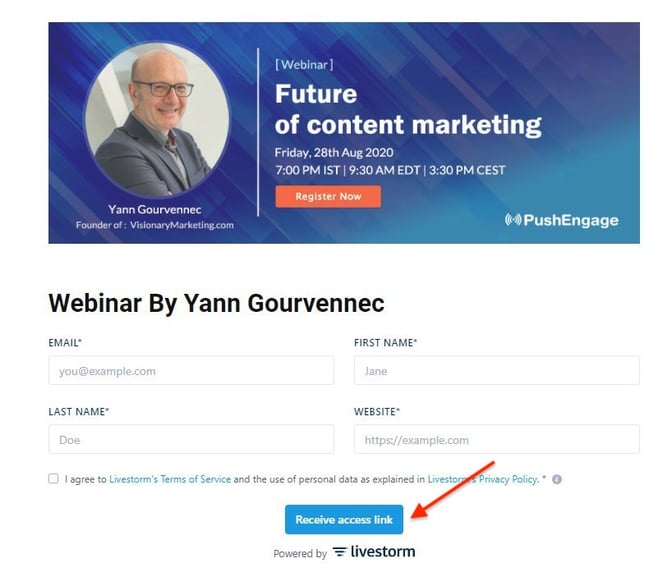
Checklists
Downloadable checklists are helpful little nuggets of content that provide a sense of satisfaction to your audience — because who doesn’t love checking something off their list? They’re also easy to create and can serve a variety of purposes.
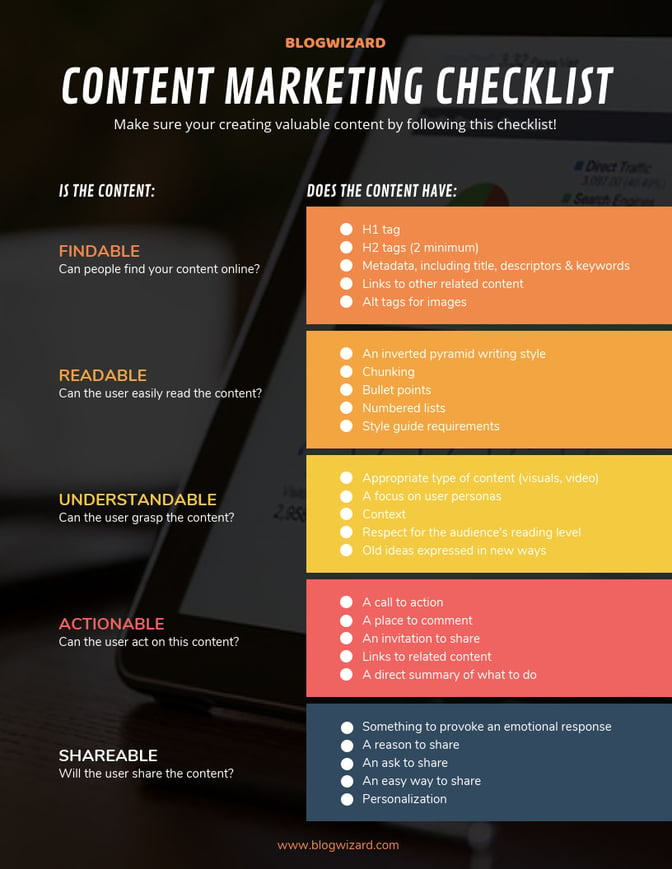
Podcasts
Podcasts are skyrocketing in popularity, especially among B2B audiences. You can produce your own podcast without too much technical skill (though you’ll likely want some help for a more professional sound). But if that isn’t an option, you can look for opportunities to appear on existing industry podcasts.
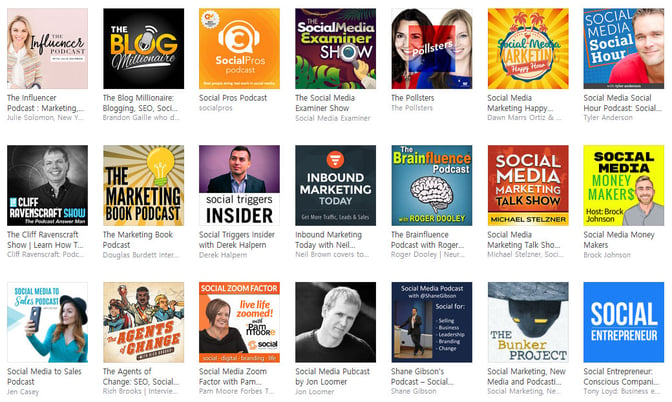
Case Studies
Case studies are extremely effective with the B2B crowd and are one of the top ways to convey hard data, facts, and figures. Case studies show buyers you understand where they are in their buying process and that you’ve provided other solutions for real clients just like them.
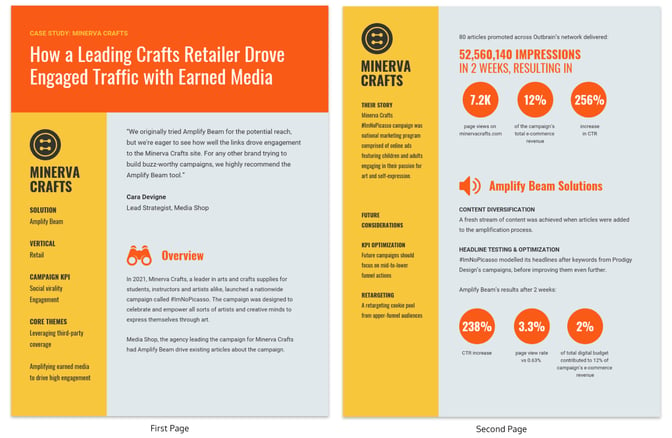
Newsletters
Newsletters are a great way to acquire and nurture leads through the funnel. But to be effective, your newsletter must provide them with really compelling content. Make sure your newsletter offers exclusive information they can’t get anywhere else so they have a reason to continue subscribing and opening.
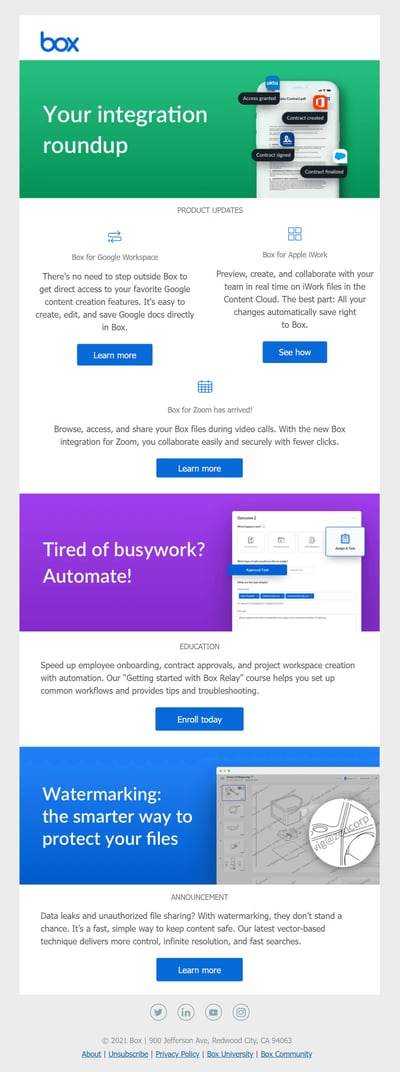
Promote Content
When it comes to content and effectiveness, it’s not always just about what you’re putting out there but where you’re putting it.
Explore different options for promoting your content, both organically and paid. You might find some content performs better on certain social media platforms, or some content is more successful with a retargeting ad behind it.
Don’t be afraid to experiment. Run some paid campaigns when budget allows, and try out new organic/inbound approaches when possible. Also, always remember to optimize every single content piece for search. SEO ensures your brand will get found, and it's most powerful when combined with amazing content.
Email Marketing
Email marketing is a perfect way to nurture your leads through the sales funnel. Plus, since most of your email marketing will be automated, you can take a hands-off approach while resting assured that your audience is receiving the messaging they need to get them closer to conversion.
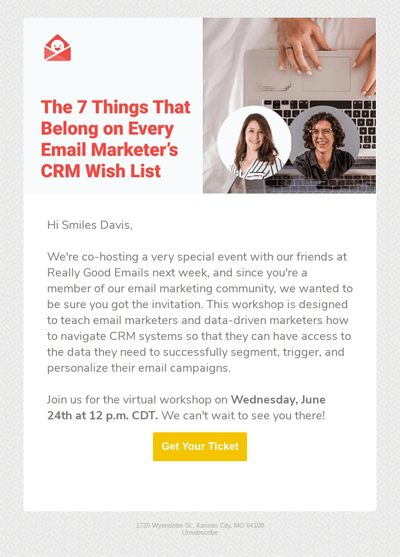
Paid Promotion
There’s power in paid advertising. It’s one of the most effective ways to get your brand out to your audience, and when you begin a paid campaign, you’ll see the results right away. One thing to keep in mind — paid only works as long as you’re shelling out the dollars, so when your budget is gone, so are your results.
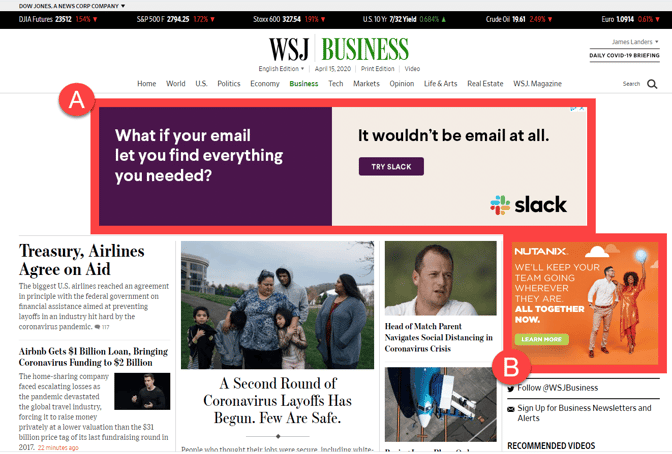
Social Media
The key to most marketing is being where your audience is. And where they are is very often on social media. You’ll need to experiment to find which platform is most effective for your brand, but typically, LinkedIn is your best bet for B2B audiences.
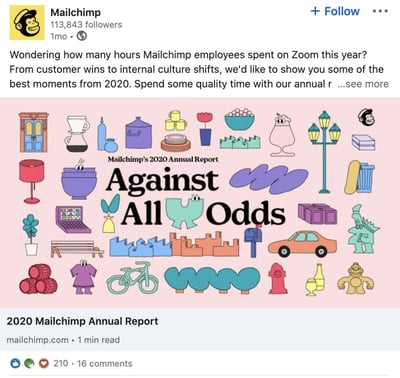
Reddit
Online forums offer another fantastic option for brands to listen in on their target audience and interact with their ideal buyers. Reddit is among the most popular, but you’ll probably want to explore others, like Quora, as well. Forums like these are a great way to connect with people and get first-hand feedback on your brand, industry, and product. Plus, now that they offer paid ads, you can ensure your brand will be seen by your target audience.
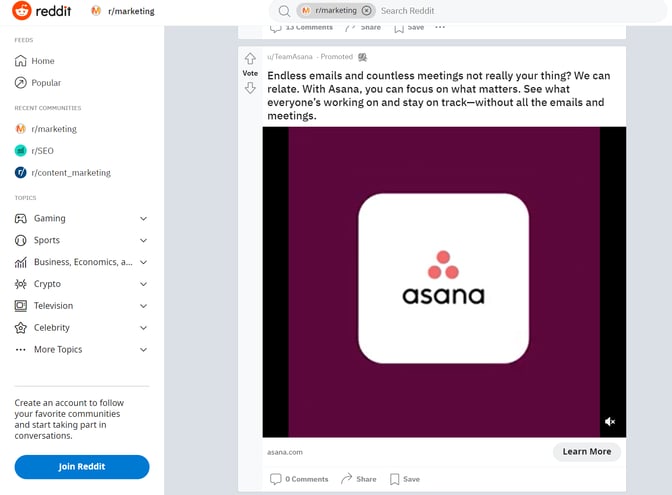
Digital PR
Digital PR is a lot like traditional PR, but instead of focusing on earned media in the print or broadcast realm, the focus is on earning placement in the digital space. Digital PR often looks more “newsy” and leaves an impression on B2B audiences as it builds trust and authority.
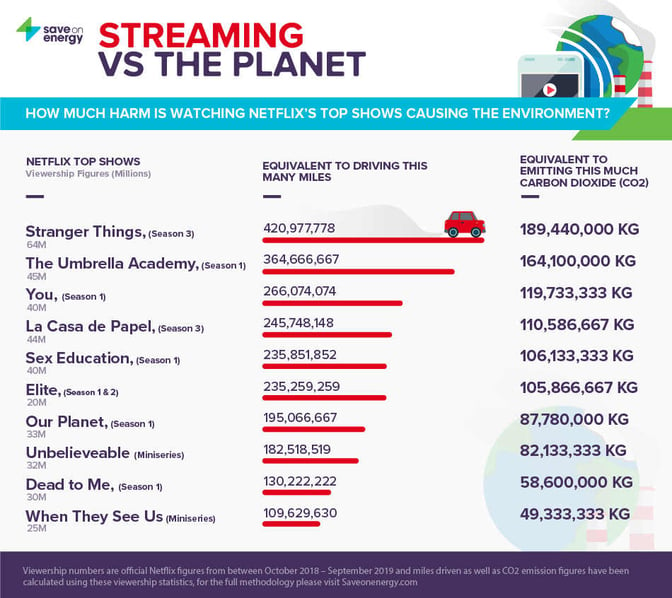
#14: Influencer Partnerships and Collaborations
Nearly any brand can benefit from an influencer partnership these days. And as the number of influencers increases, it’s easier than ever to find someone who has an established relationship with the audience you want to reach.
For B2B brands, you’ll probably want to seek out a micro-influencer with a strong foothold in your industry.
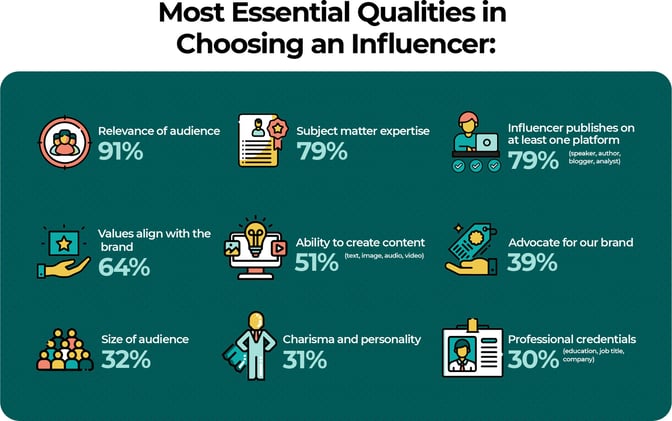
As the influencer market becomes more saturated though, it’s important to take your time and invest careful consideration in choosing the right influencer with whom to partner. Look for someone with an audience that’s most aligned with your buyer persona(s), has a great reputation, and provides strong thought leadership content.
#15: Build Backlinks
Backlinks are so critical to your brand performance. They can help you rank better in search results, build authority, and solidify your reputation in your industry. The content you create is a make-or-break factor in how many backlinks you acquire and their quality.
Overall, longer content gives you greater opportunity to generate maximum backlinks.
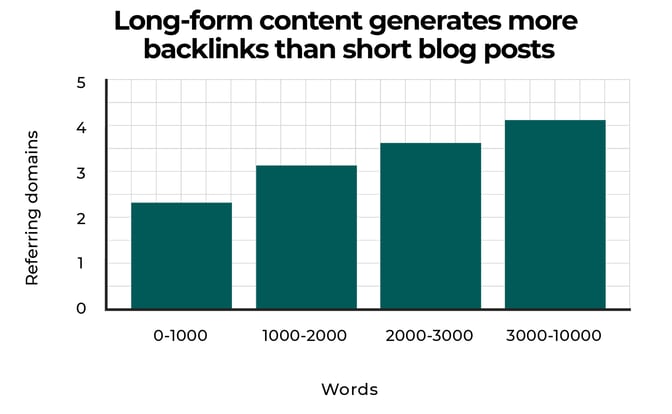
When building your backlink portfolio, outreach is important. Look for industry blogs where you’d like your content to appear, then create an engaging and attention-grabbing email to connect with them and request a placement. You can even incentivize the request by offering to donate to a charity or giving them a backlink on a guest post you’ve written on another site.
#16: Segment Retargeting Ads
Retargeting ads are highly effective at increasing conversions because they serve up content in which the audience has already shown an interest. Overall, while people have a general distaste for paid ads, they don’t mind retargeting all that much.
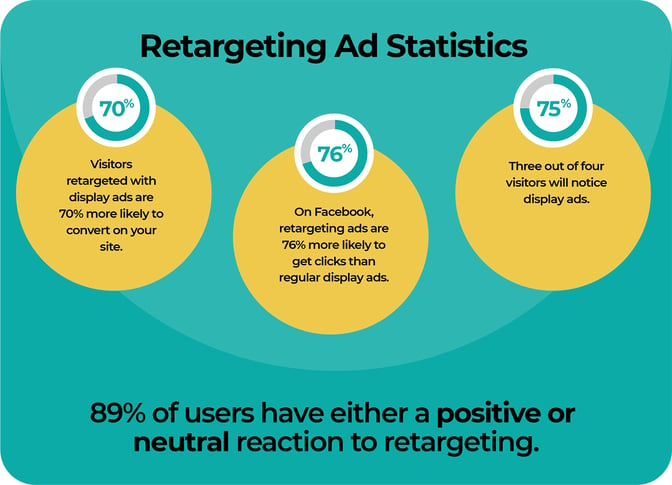
Retargeting is a powerful way to reach your audience, but you’ll want to make sure that you get the segmentation exactly right. You might have more success if you break down retargeting ads by product (so those who have already visited a product page see the ad) or by funnel stage (so those who have visited a bottom of the funnel page see a particular ad).
#17: Use Paid Ads to Promote Conversion Assets
As we’ve mentioned, paid advertising is a fast way to drive real, tangible results. Many marketers only think of paid campaigns to promote their products and sales, but it’s also a great way to promote a high-converting piece of content. There are many ways to promote content through paid ads, including:
- Paid social media posts
- Display ads
- Search ads
- Reddit ads
But we’ve got to give the same warning we always make when it comes to paid advertising — once your money dries up, the results do, too. Fortunately, there’s a solution: Pair paid ads with organic marketing tactics to generate both short-term revenue and long-term sustainable growth.
#18: Organize Content in a Topic Cluster Format
The topic cluster model is great for many reasons: It helps you organize your website so you know exactly what content lives where, but it also ensures your visitors have an easier time finding what they’re looking for.
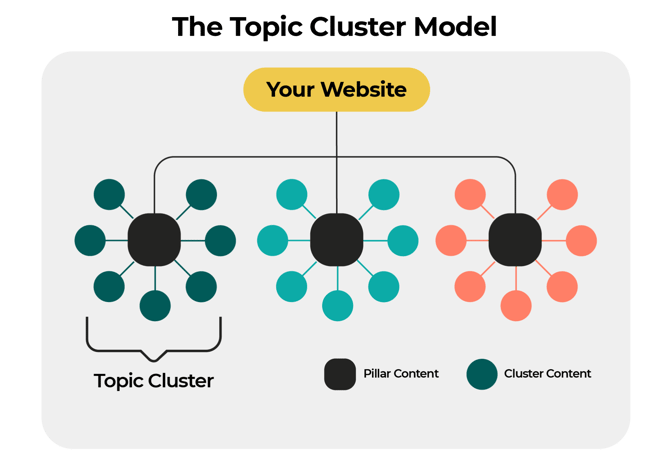
In the topic cluster model, you’ll choose several relevant clusters to your industry and brand (and speak to your buyer personas). You’ll create a pillar page for each cluster, where all of the info on that topic will be easily accessible. Other supporting pages can then be linked to the pillar page.
This is helpful to your audience, who now have a way to find the exact information they need easily and effectively. But it also helps you track performance and understand which clusters are most successful and which content needs some work.
#19: Measure Results
Of course, you’ll want to be keeping tabs on your performance as you launch your B2B content marketing strategy. Watching the metrics will help you know when a content piece isn’t hitting the mark and when to adapt your messaging or offer to suit your audience.
Here’s a list of some of the main metrics you should be keeping an eye on:
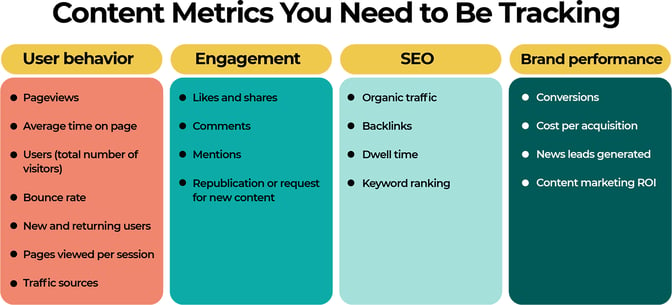
Remember that when it comes to content marketing, you can’t base everything on sales alone. You’ll need to look at the behavior of your leads/customers, how involved and engaged they are, and how successful your content pieces are.

#20: Use Content Marketing Tools to Automate Tasks
You know that saying about working smarter, not harder? Well, it’s pretty easy to overthink content marketing, but if you find you’re getting in over your head, seek out trusted tools to pick up the slack and do some of the heavy lifting when it comes to content creation and distribution. Automate simple, repetitive (tedious, boring) tasks so that you can stay focused on strategy instead. Here are some of our top picks:
Frase
Frase uses AI to craft everything from content briefs to copy that’s optimized for search. The goal isn’t for the robots to kick writers out of a job (this writer hopes, anyway) but to boost your content marketing strategy. You’ll still need to give content a human touch, but if you want to ensure your content is optimized to rank well and align with your strategy, this is a great place to start.
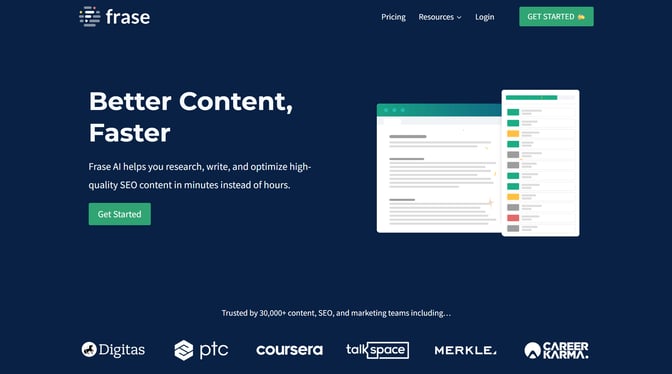
Marketmuse
If you don’t have a vast team of writers or dozens of hours of spare time to put into researching each content piece, Marketmuse could be the solution you’ve been looking for. This AI-powered tool will get the research done and ensure you’ve got exactly what you need to build content that’s optimized, organized, and ready to rank.
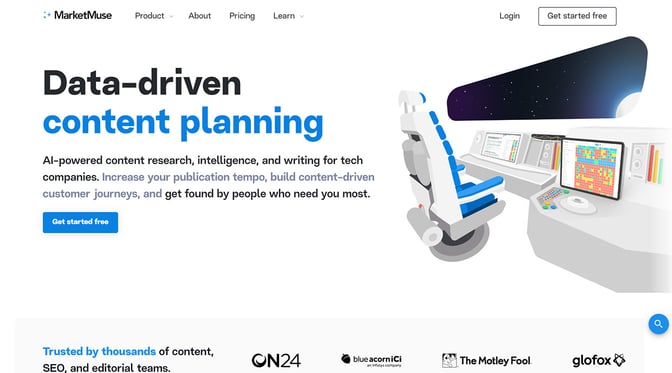
Semrush
This extremely powerful and well-respected SEO tool also has a content marketing platform. It’s a great choice if you already know your way around Semrush SEO, and it offers one of the most powerful content marketing analytics tools available. Semrush content will help you research keywords, brainstorm ideas, and measure your content’s potential so you have an idea of how it will perform.
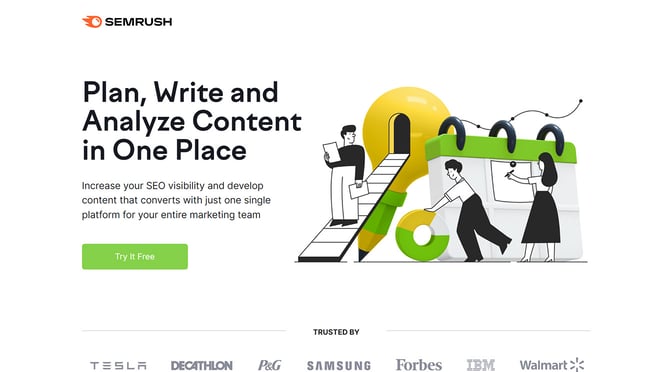
Need Help Creating a B2B Content Marketing Strategy?
We all do better with a little help. And as vast an undertaking as content marketing can be, it’s no wonder you need some support.
That’s why FPS is here. We’re content creators, content marketers, content experts, and just pretty cool people. We’re also data-driven and strategically inclined, so you know that what you get from us will always be backed by evidence and designed for your specific needs.
It’s not easy to DIY an entire content marketing strategy for a B2B brand. So let us help. We’ve got combined decades of experience in content marketing, and it’s one of the core services we’ve provided to top B2B clients. Find out how we can generate the same success (or even better) for your brand. Contact us today to find out how!